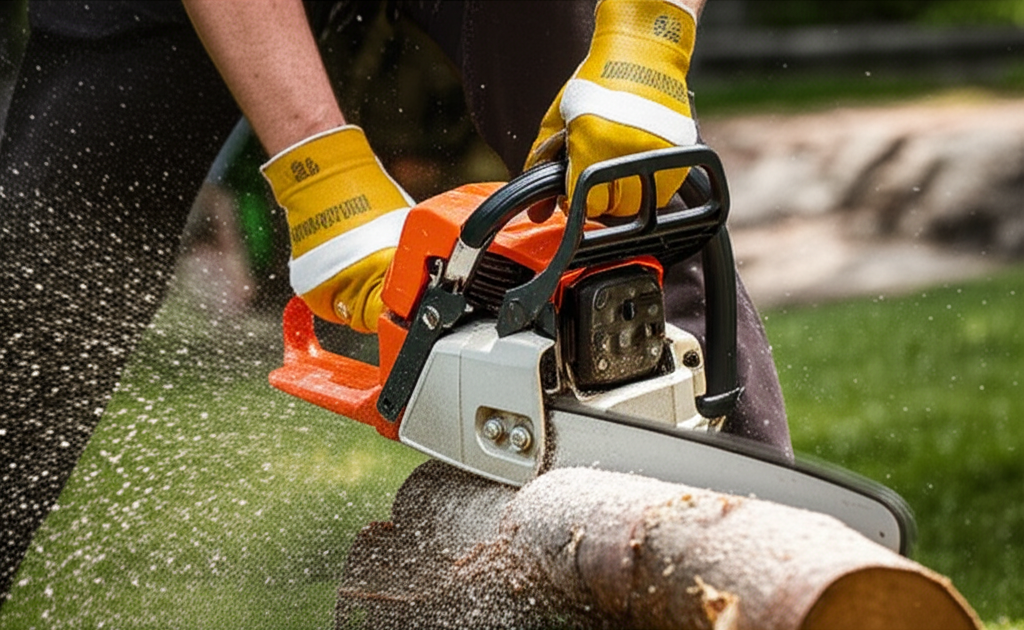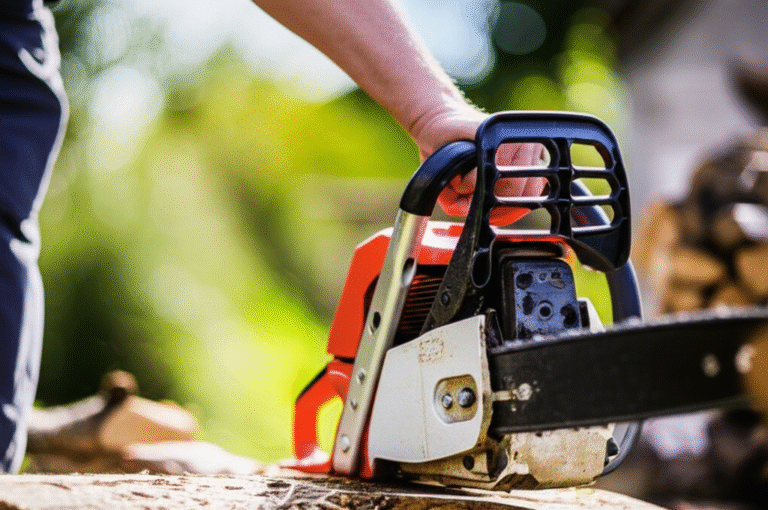The easiest way to start a chainsaw involves a few key preparation steps and a consistent, confident technique. Ensuring your chainsaw is properly fueled, the chain brake is engaged, and you’re using the choke and primer bulb correctly will make starting significantly simpler and safer. Follow these proven tips for hassle-free starts every time.
So, you’ve got a chainsaw, and you need to get some work done. Whether it’s clearing fallen branches after a storm, trimming a few pesky limbs, or cutting firewood for the winter, a chainsaw is an invaluable tool. But let’s be honest, the thought of starting that powerful machine can be a little daunting, especially if you’re new to it. Many folks find that getting a chainsaw to fire up feels like wrestling a wild animal, and it’s a common frustration for beginners.
Don’t worry, though. I’ve been there, done that, and made every rookie mistake so you don’t have to. Starting a chainsaw doesn’t have to be a battle. With the right knowledge and a few simple techniques, you can get your saw running smoothly and safely in no time. We’re going to break down the easiest way to start a chainsaw, step-by-step, so you can tackle your projects with confidence.
Understanding Your Chainsaw: The Basics Before You Pull

Before we even think about pulling that starter cord, let’s get familiar with the key parts of your chainsaw that are crucial for starting. Knowing these will make the process much clearer.
Choke: This lever controls the airflow to the engine. When it’s cold, you need a richer fuel-air mixture, so you’ll engage the choke. Once the engine warms up, you’ll disengage it.
Primer Bulb: This is a small, rubbery bulb, usually located near the carburetor. Pressing it pumps fuel directly into the carburetor, helping to get fuel into the engine, especially when it’s cold.
Throttle Lockout: This safety feature prevents the throttle from being accidentally engaged. You’ll need to press it down before you can squeeze the throttle trigger.
Chain Brake: This is your most important safety feature. It’s a lever that, when engaged, stops the chain from moving. Always engage the chain brake before starting your chainsaw.
On/Off Switch: Simple enough, this controls whether the engine is running or stopped. Make sure it’s in the “on” position.
Recoil Starter (Pull Cord): This is what you’ll pull to crank the engine.
The Easiest Way to Start a Chainsaw: A Step-by-Step Guide
The “easiest” way is really the safest and most effective way, which leads to the easiest start. We’ll cover both cold starts and warm starts, as they have slight differences.
Step 1: Safety First, Always!
This cannot be stressed enough. Chainsaws are powerful tools, and safety is paramount.
1. Clear Your Area: Ensure you have a clear, stable, and flat surface to place the chainsaw. Remove any debris, leaves, or obstacles around you.
2. Engage the Chain Brake: Push the chain brake lever forward until it clicks. This stops the chain from spinning when the engine starts.
3. Proper Footing: Place the chainsaw on the ground. Put your right foot through the rear handle (the part with the trigger) to secure it. Place your left hand firmly on the top handle. This is often called the “ground start” or “foot brace” method, and it’s the safest for beginners.
4. No Hanging: Never try to start a chainsaw while holding it in the air or between your legs. This is incredibly dangerous.
Step 2: Check Fuel and Oil
Before you even think about starting, make sure your saw is ready to go.
Fuel Mixture: Most chainsaws use a mix of gasoline and 2-stroke oil. Check your owner’s manual for the correct ratio (usually 40:1 or 50:1). Using the wrong mix can damage your engine.
Bar and Chain Oil: Ensure the reservoir for bar and chain oil is full. This oil lubricates the bar and chain, preventing them from overheating and seizing.
Clean Air Filter: A clogged air filter can make starting difficult. Give it a quick check and clean if necessary.
Step 3: Setting Up for a Cold Start
This is for when the engine is completely cold.
1. Engage Choke: Move the choke lever to the “full choke” or “start” position. This usually means pushing it all the way in or up, depending on the model.
2. Prime the Carburetor (If Equipped): Locate the primer bulb. Press it firmly 3-5 times, or until you see fuel moving within the bulb. This pushes fuel into the carburetor.
3. Half-Choke (If Applicable): Some chainsaws have a “half-choke” setting. If yours does, after priming, move the choke to this intermediate position. This provides a slightly leaner mixture for the first few pulls. If you don’t have a half-choke, you’ll proceed to pull with the full choke.
4. Ensure On/Off Switch is ON: Double-check that the kill switch is in the “run” or “on” position.
Step 4: The Pull – Cold Start
Now for the moment of truth.
1. Grip Firmly: With your left hand on the top handle and your right foot bracing the rear handle, grab the starter rope handle with your right hand.
2. Smooth, Firm Pull: Pull the starter rope smoothly and steadily, but with firm force, until you feel resistance. Then, give it a sharp, strong yank.
3. Listen for a “Pop”: You’re listening for the engine to sputter or “pop” – this means it’s trying to fire.
4. Adjust Choke: If you heard a “pop” (or if it didn’t start after 3-5 strong pulls on full choke), it’s time to adjust. Move the choke lever to the “run” or “no choke” position.
5. Pull Again: Give the starter rope another firm pull. The engine should now start and run, though it might idle a bit roughly at first.
6. Disengage Choke: Once the engine is running, immediately push the choke lever all the way back to the “run” position. If you don’t, the engine will likely flood and die.
7. Warm-Up: Let the chainsaw idle for about 30 seconds to a minute to warm up properly before using it.
Step 5: Setting Up for a Warm Start
If your chainsaw has been running recently and is still warm, the process is simpler.
1. Engage Choke (Usually Not Needed): For a warm start, you typically do not* need the choke. Some manuals might suggest a brief moment on half-choke, but often, the “run” position is all you need.
2. Primer Bulb (Usually Not Needed): You generally don’t need to use the primer bulb for a warm start.
3. Ensure On/Off Switch is ON: Again, make sure the kill switch is in the “run” position.
Step 6: The Pull – Warm Start
1. Grip Firmly: Secure the saw with your foot and hand as before.
2. Smooth, Firm Pull: Pull the starter rope smoothly and with a strong yank.
3. It Should Start: A warm engine should start on the first or second pull. If it doesn’t, check your fuel, ensure the on/off switch is correctly positioned, and try again. If it still struggles, there might be another issue (which we’ll touch on later).
Troubleshooting Common Starting Problems
Even with the best technique, sometimes chainsaws can be stubborn. Here are common issues and how to fix them:
| Problem | Possible Cause | Solution
